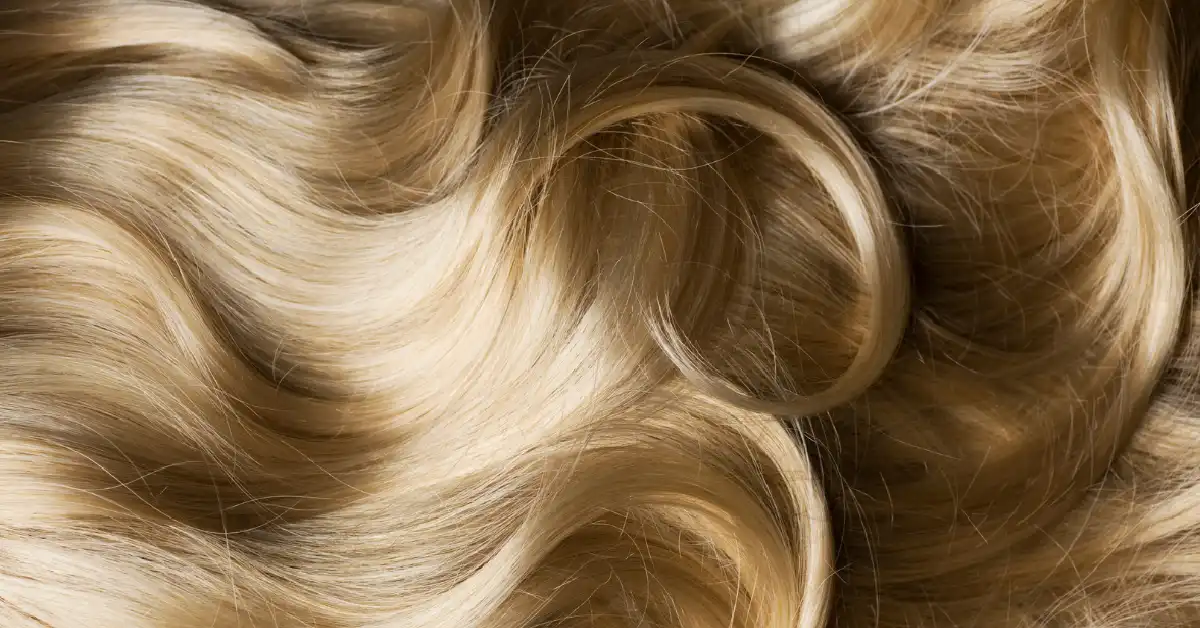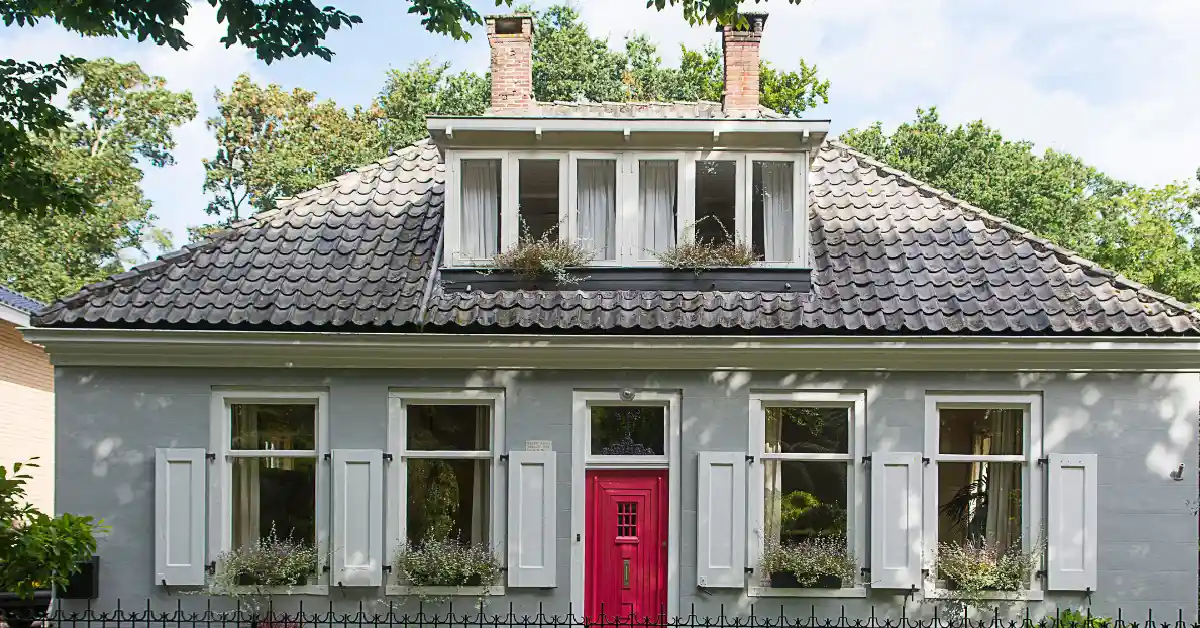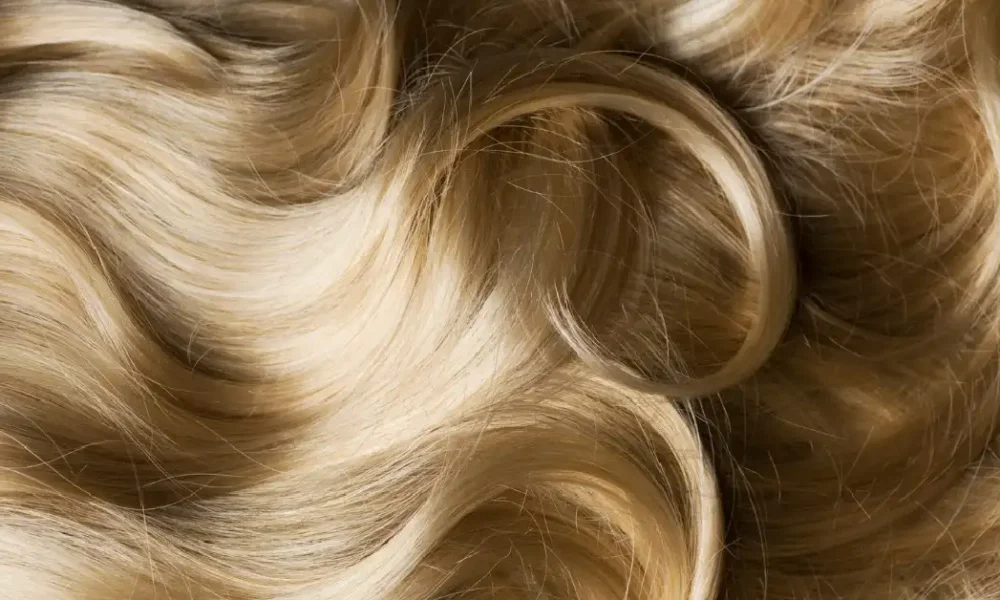Lifestyle
Blonde Meaning: Origins, Symbolism, and Modern Interpretations

When people hear the word blonde, they often associate it with beauty, youthfulness, and charm. But what is the true blonde meaning, and how has it evolved through history? Beyond being just a hair color, “blonde” carries deep cultural symbolism, historical associations, and even stereotypes that influence how people view it today.
In this detailed guide, we’ll uncover the history of blonde hair, its symbolic meanings across different cultures, and the modern perspectives that shape its identity. Whether you’re naturally blonde, dyed blonde, or simply curious about its significance, this article provides a complete understanding.
1. Introduction to Blonde Meaning
The word “blonde” generally refers to a person with light hair, ranging from golden tones to platinum shades. However, the blonde meaning extends far beyond color—it reflects cultural ideals, beauty standards, and personal identity.
Blonde has often symbolized innocence, purity, and attractiveness, yet it also carries stereotypes of being less intelligent or overly flirtatious. Interestingly, these perceptions have shifted across eras and regions, proving that blonde meaning is more than skin-deep.
2. Historical Origins of Blonde Hair
Blonde hair is believed to have originated thousands of years ago in Northern and Eastern Europe due to genetic mutations. Ancient records suggest that lighter hair was relatively rare and often linked to goddess-like figures or divine qualities.
-
In Ancient Greece, blonde was considered the color of the gods.
-
In Roman culture, blonde wigs were imported from Germany to signify wealth and status.
-
In Medieval Europe, golden hair symbolized purity, often associated with saints in religious paintings.
Thus, the historical roots of blonde meaning highlight its long-standing connection with beauty and spirituality.
More Article Here
3. Blonde Symbolism Across Cultures
The meaning of blonde varies across regions:
-
Western cultures: Blonde is often seen as youthful, attractive, and glamorous.
-
Eastern cultures: Blonde can symbolize uniqueness, luxury, or Western influence.
-
Nordic cultures: Naturally blonde hair is associated with heritage and tradition.
This diversity proves that blonde meaning is not universal—it adapts to cultural perceptions and social contexts.
4. Stereotypes Linked to Blonde Meaning
Despite its beauty, blonde has also carried stereotypes. The “dumb blonde” myth became widespread in the 20th century, painting blondes as attractive but unintelligent. On the flip side, blonde women were also seen as glamorous icons, often portrayed as seductive in movies.
These stereotypes highlight the duality of blonde meaning—both admired and underestimated.
5. Blonde in Literature, Art, and Media
Throughout history, blonde characters in literature and art have often represented innocence or divine qualities.
-
In fairy tales, blonde princesses embody purity.
-
In Renaissance art, blonde saints were painted as holy figures.
-
In Hollywood, icons like Marilyn Monroe gave blonde a glamorous and seductive reputation.
Media continues to shape how society interprets the blonde meaning today.
6. Modern Interpretations of Blonde Meaning
In today’s world, being blonde is no longer limited to natural genetics. With modern hair coloring, blonde is a choice of self-expression.
Modern blonde meaning represents:
-
Confidence and boldness
-
Aesthetic preference in fashion
-
Status symbol in certain cultures
-
Personal reinvention and freedom
Thus, the meaning has shifted from heritage to individuality.
7. Blonde Hair in Fashion and Beauty Standards
Fashion trends often highlight blonde as a timeless beauty standard. Blonde shades like ash, platinum, and honey remain some of the most popular hair colors worldwide.
Celebrities and influencers frequently dye their hair blonde to stand out and set trends, proving that blonde meaning in beauty is tied to visibility and desirability.
8. Psychological Impact of Being Blonde
Studies suggest that people often perceive blondes differently, which influences their confidence and social interactions.
-
Blondes may be viewed as more approachable or friendly.
-
Some studies show that blonde women are noticed more in social settings.
-
However, stereotypes can also create pressure, leading to misunderstandings.
This psychological impact adds another layer to the blonde meaning in modern life.
9. Comparison Chart: Blonde Meaning vs Other Hair Colors
| Hair Color | Symbolism | Social Perception | Modern Associations |
|---|---|---|---|
| Blonde | Youth, beauty, charm | Glamorous, approachable | Fashionable, bold choice |
| Brunette | Intelligence, depth | Reliable, serious | Professional, trustworthy |
| Red | Passion, uniqueness | Fiery, mysterious | Rare, adventurous |
| Black | Power, elegance | Strong, confident | Classic, timeless |
This comparison shows how each color carries unique meanings, but blonde remains strongly tied to attraction and visibility.
10. FAQs About Blonde Meaning
Q1: What is the true blonde meaning?
Blonde refers to light-colored hair but also symbolizes beauty, youth, and cultural ideals.
Q2: Is blonde hair natural or artificial?
While natural blonde occurs in some populations, many people achieve it through hair dye.
Q3: Why are blondes stereotyped in media?
Media shaped the stereotype of blondes as glamorous but less intelligent, which has persisted over decades.
Q4: Does blonde meaning change across cultures?
Yes, in the West it often symbolizes beauty, while in Asia it may reflect modern style or uniqueness.
Q5: Is blonde still considered desirable today?
Yes, blonde remains one of the most popular hair colors worldwide in both fashion and personal style.
11. Conclusion
The blonde meaning goes far beyond being just a hair color. From its origins in ancient societies to its symbolic role in media and fashion, blonde has carried deep cultural weight. While stereotypes have shaped perceptions, modern interpretations view blonde as a symbol of individuality, confidence, and reinvention.
Whether natural or chosen, blonde continues to capture attention, making it one of the most powerful representations of beauty and personal identity in the world today.
Lifestyle
Openhouseperth.net: Your Complete Guide to Exploring Hidden Gems

Introduction
Openhouseperth.net is more than just a website—it’s a gateway to exploring the cultural, architectural, and lifestyle treasures of Perth. From hidden gems to world-class events, this platform brings together stories, experiences, and opportunities that allow locals and visitors to rediscover the city in a new light. Whether you’re interested in design, history, or simply finding new places to explore, Openhouseperth.net offers a curated experience that blends creativity with community engagement.
In this article, we’ll dive deep into what Openhouseperth.net offers, why it matters, and how it transforms the way people connect with Perth’s vibrant culture. You’ll also find a practical comparison chart, FAQs, and a complete guide designed to keep you engaged.
1. What is Openhouseperth.net?
Openhouseperth.net is a curated lifestyle and events platform that highlights the culture, architecture, and unique experiences of Perth. It opens doors to places and stories that people might otherwise overlook, giving them a chance to explore the city in depth.
Unlike traditional event directories, it provides exclusive insights into local architecture, design concepts, and community-driven initiatives.
More Article Here
2. The Core Purpose of Openhouseperth.net
The platform’s mission is to connect people with Perth’s cultural and architectural heritage. It is designed to:
-
Showcase hidden gems.
-
Celebrate innovative design and sustainable spaces.
-
Offer immersive cultural events.
-
Encourage community participation.
3. Key Features That Make It Unique
-
Curated Events: Focus on architecture, art, and lifestyle.
-
Cultural Insights: Stories about history and design.
-
Accessibility: Easy-to-navigate website for locals and tourists.
-
Community Engagement: Opportunities for volunteers, creators, and businesses.
4. How Openhouseperth.net Benefits the Community
The platform strengthens community bonds by encouraging people to rediscover their city. It inspires collaboration between architects, artists, businesses, and everyday residents, creating a shared sense of pride.
5. Why Architecture Plays a Central Role
Perth’s architectural landscape is diverse, blending heritage with modern designs. Openhouseperth.net emphasizes architecture as the backbone of culture, showing how spaces shape community life and creativity.
6. Events and Experiences Hosted
Events typically include:
-
Architectural tours.
-
Public open houses of private buildings.
-
Workshops on design and sustainability.
-
Lifestyle events focusing on food, art, and culture.
7. Opportunities for Locals and Tourists
-
Locals: A chance to rediscover familiar neighborhoods.
-
Tourists: Authentic cultural experiences beyond the usual attractions.
8. How Openhouseperth.net Supports Sustainability
Sustainability is a core principle. By promoting eco-friendly buildings, green practices, and responsible tourism, the platform helps reduce environmental impact.
9. Digital Access and User Experience
The website is designed with user-friendly navigation, allowing visitors to:
-
Search upcoming events.
-
Learn about architecture and cultural sites.
-
Explore guides and recommendations.
10. Cultural Impact of Openhouseperth.net
By highlighting Perth’s identity, Openhouseperth.net strengthens cultural appreciation, making the city more attractive to creatives, businesses, and tourists alike.
11. Creative Inspiration and Learning Opportunities
For students, professionals, and enthusiasts, the platform offers learning resources on:
-
Urban design.
-
Architectural innovation.
-
Community-driven development.
12. Comparison Chart: Openhouseperth.net vs. Similar Platforms
| Feature | Openhouseperth.net | Generic Event Platforms |
|---|---|---|
| Focus on Architecture & Culture | ✅ Yes | ❌ No |
| Community Engagement | ✅ Strong | ⚠️ Limited |
| Sustainability Highlights | ✅ Core Value | ❌ Not Emphasized |
| Local Insights | ✅ Authentic | ❌ Generic |
| Visitor Experience | ✅ Immersive | ⚠️ Basic |
13. Who Should Use Openhouseperth.net?
-
Tourists seeking unique local experiences.
-
Locals who love culture and design.
-
Businesses wanting to connect with the community.
-
Students and professionals in architecture or design.
14. How Businesses Can Benefit
Businesses can partner with the platform to:
-
Gain exposure at events.
-
Reach culturally engaged audiences.
-
Showcase their sustainable or creative practices.
15. Tips to Get the Most Out of Openhouseperth.net
-
Stay updated on the events calendar.
-
Join workshops for hands-on learning.
-
Explore hidden locations featured.
-
Connect with like-minded individuals.
16. The Future of Openhouseperth.net
The platform is expected to expand further by:
-
Introducing more digital experiences.
-
Highlighting innovative sustainable projects.
-
Strengthening its role in Perth’s cultural identity.
17. 5 Most Frequently Asked Questions (FAQs)
Q1: What makes Openhouseperth.net special?
It focuses on architecture, culture, and sustainability while offering immersive experiences.
Q2: Is it only for locals?
No, it’s for both locals and tourists who want to explore Perth differently.
Q3: Are events free?
Some events are free, while others may require tickets depending on exclusivity.
Q4: Can businesses collaborate?
Yes, businesses can showcase their services, sponsor events, or participate in programs.
Q5: How often are events updated?
Events are regularly updated throughout the year to reflect seasonal highlights.
Conclusion
Openhouseperth.net is more than just an events platform—it’s a cultural movement that highlights the very best of Perth. By blending architecture, creativity, and sustainability, it creates a meaningful connection between people and their city. Whether you’re a local rediscovering hidden gems or a visitor exploring new experiences, this platform opens the door to a richer, more authentic Perth.
Lifestyle
Discover /liveamoment.org/: Transform Your Life with Mindfulness and Purpose

Introduction
In today’s fast-paced digital world, stress, anxiety, and distractions dominate our daily lives. Many people crave inner peace, mindfulness, and a sense of purpose but struggle to find it amidst chaos. That’s where /liveamoment.org/ comes in. It offers practical guidance, tools, and resources to help individuals embrace mindful living, develop inner strength, and discover the beauty of being present.
This article will explore what /liveamoment.org/ is all about, its mission, features, benefits, and how you can integrate its teachings into your daily life for a calmer, more fulfilling future.
1. What is /liveamoment.org/?
/liveamoment.org/ is an online platform dedicated to promoting mindfulness, compassion, and emotional well-being. It helps people pause, reflect, and reconnect with themselves through resources, practices, and programs designed for personal growth. Whether you are new to mindfulness or already practice meditation, /liveamoment.org/ provides tools that fit every stage of your journey.
2. The Mission and Vision Behind /liveamoment.org/
The mission is simple yet powerful: help people live more meaningful and present lives.
The vision centers on creating a world where individuals prioritize mental well-being, kindness, and self-awareness over stress, overthinking, and negativity. By fostering inner peace, the platform indirectly contributes to building compassionate communities and a healthier society.
3. Key Features and Offerings
/liveamoment.org/ stands out because of its unique offerings:
-
Guided Mindfulness Practices: Easy-to-follow exercises for stress relief and focus.
-
Workshops & Webinars: Live sessions led by experts to deepen understanding.
-
Self-Reflection Tools: Journaling prompts and emotional awareness tests.
-
Community Support: A network of like-minded people for shared learning.
-
Mobile-Friendly Resources: Access lessons and exercises anytime, anywhere.
4. How /liveamoment.org/ Promotes Mindful Living
The platform integrates mindfulness into daily routines by encouraging users to:
-
Practice short meditation sessions during breaks.
-
Engage in gratitude journaling each morning.
-
Use breathing techniques to manage stress instantly.
-
Participate in emotional awareness programs for better relationships.
These simple yet effective practices empower users to stay present and mindful throughout the day.
5. Benefits of Using /liveamoment.org/ Resources
Here are some key benefits:
-
Reduced Stress & Anxiety: Learn techniques that calm the mind.
-
Improved Focus: Mindfulness boosts productivity and mental clarity.
-
Better Emotional Regulation: Respond rather than react in tough situations.
-
Stronger Relationships: Mindfulness nurtures empathy and communication.
-
Enhanced Well-being: A holistic approach to mental, emotional, and spiritual health.
6. Comparison Chart: /liveamoment.org/ vs. Traditional Mindfulness Methods
| Features | /liveamoment.org/ | Traditional Methods |
|---|---|---|
| Accessibility | Online, 24/7 Availability | In-person, Limited Schedule |
| Guided Programs | Expert-led Digital Sessions | Self-taught or Group Sessions |
| Community Interaction | Global Online Community | Local Groups Only |
| Cost-Effectiveness | Often Free or Low-Cost | Varies, Often Higher |
| Beginner-Friendly | Highly Simplified Tools | May Require Prior Knowledge |
7. Steps to Get Started with /liveamoment.org/
-
Sign Up: Create a free account to access resources.
-
Explore Programs: Choose mindfulness practices suitable for your lifestyle.
-
Set Goals: Decide whether you want stress relief, better focus, or emotional growth.
-
Start Small: Practice 5-minute daily mindfulness exercises.
-
Track Progress: Use self-reflection tools to monitor improvement.
8. Real-Life Applications of Mindfulness Techniques
People from all walks of life use /liveamoment.org/ techniques for:
-
Workplace Stress Management
-
Parenting with Patience and Presence
-
Improved Sleep Quality
-
Emotional Healing and Resilience
9. Expert Tips for Maximizing Benefits
-
Be Consistent: Daily practice leads to long-term results.
-
Stay Open-Minded: Experiment with different mindfulness techniques.
-
Engage with the Community: Shared learning accelerates growth.
-
Set Reminders: Use phone alarms to prompt mindfulness breaks.
-
Celebrate Small Wins: Acknowledge even minor progress.
10. FAQs
Q1: Is /liveamoment.org/ suitable for beginners?
Yes, it offers step-by-step guidance for those new to mindfulness.
Q2: Can I access resources on mobile devices?
Absolutely, the platform is fully mobile-friendly.
Q3: Does it require a paid subscription?
Many features are free, while advanced programs may have nominal costs.
Q4: How much time should I spend daily?
Even 5–10 minutes a day can bring noticeable benefits.
Q5: Can mindfulness help with workplace stress?
Yes, numerous studies show it improves focus and reduces anxiety at work.
Conclusion
/liveamoment.org/ offers a powerful way to embrace mindfulness and emotional well-being in today’s hectic world. By integrating its tools into your daily routine, you can reduce stress, boost focus, and create a meaningful life rooted in peace and purpose. Start small, stay consistent, and watch how mindfulness transforms your mental and emotional health for the better.
Health
World Gym San Diego Reviews: The Ultimate Guide for 2025

Introduction
When it comes to choosing the right fitness center, reading real experiences is crucial. World Gym San Diego Reviews help fitness enthusiasts understand what this popular gym offers—from state-of-the-art equipment to expert trainers and community vibes. This article provides an in-depth look at facilities, programs, pricing, and customer feedback, so you can make an informed decision before signing up.
1. What is World Gym San Diego?
World Gym San Diego is part of the globally recognized World Gym brand, offering a blend of traditional strength training setups and modern fitness innovations. Known for its spacious layout, advanced equipment, and supportive community, this gym caters to beginners, intermediate athletes, and professional bodybuilders alike.
2. Why Reviews Matter Before Joining
Reviews serve as a bridge between the marketing claims of fitness centers and the real-life experiences of members. They reveal insights about:
-
Cleanliness and maintenance of facilities
-
Trainer professionalism and expertise
-
Crowd levels during peak hours
-
Class quality for group sessions
-
Value for money in memberships
By analyzing authentic World Gym San Diego Reviews, prospective members can avoid surprises and set realistic expectations.
3. Facilities and Amenities: A Closer Look
World Gym San Diego stands out for its extensive list of amenities, which often receive positive feedback:
-
State-of-the-art cardio machines with performance tracking
-
Free weight zones for strength training enthusiasts
-
Group fitness studios offering yoga, Zumba, and HIIT classes
-
Locker rooms and showers maintained with strict hygiene
-
Recovery areas featuring saunas or massage chairs (location-specific)
Members often praise the ample parking space and convenient operating hours.
4. Trainers and Fitness Programs
One recurring highlight in World Gym San Diego Reviews is the quality of trainers. Certified instructors design personalized programs, including:
-
Weight loss plans
-
Muscle-building regimens
-
Sports-specific training
-
Senior fitness programs
-
Post-injury rehabilitation support
Group classes are particularly popular for their motivational energy and structured workouts.
5. Membership Options and Pricing
World Gym offers flexible membership plans such as:
-
Monthly plans for short-term users
-
Annual memberships for cost savings
-
Family packages at discounted rates
-
Student specials for budget-friendly access
Many reviews mention the gym’s transparent pricing with no hidden charges, adding to its trust factor.
6. Member Experience: Pros and Cons
Pros
-
Modern equipment
-
Skilled trainers
-
Diverse fitness programs
-
Clean and spacious environment
-
Community-oriented atmosphere
Cons
-
Peak hour crowds
-
Limited parking at certain times
-
Occasional wait times for popular classes
7. Comparison Chart: World Gym vs. Other Local Gyms
| Feature | World Gym San Diego | Typical Local Gym | Boutique Fitness Studio |
|---|---|---|---|
| Equipment Quality | Advanced & Modern | Basic | Moderate |
| Trainer Expertise | Certified & Experienced | Varies | Specialized |
| Membership Cost | Moderate & Flexible | Low to Moderate | Higher |
| Class Variety | High (Yoga, HIIT, Zumba) | Limited | High (Niche Workouts) |
| Operating Hours | Extended | Standard | Standard |
| Community Engagement | Strong | Moderate | Moderate |
8. Tips for New Members
-
Visit during non-peak hours for a quieter experience.
-
Try out free trial classes before committing.
-
Consult trainers for personalized plans early on.
-
Stay consistent for visible results.
-
Join group sessions to stay motivated.
9. Real Member Testimonials: Key Takeaways
While privacy prevents sharing direct reviews, common themes emerge:
-
Members love the professional guidance from trainers.
-
Many appreciate the cleanliness and maintenance efforts.
-
Some request more weekend classes for busy schedules.
10. 5 FAQs About World Gym San Diego
Q1: What are the operating hours of World Gym San Diego?
Most branches open early morning and close late at night, accommodating various schedules.
Q2: Does the gym offer personal training?
Yes, certified trainers provide one-on-one coaching tailored to fitness goals.
Q3: Are there group fitness classes available?
Absolutely, classes like yoga, Zumba, and HIIT are highly popular among members.
Q4: Is there a free trial option before joining?
Many locations offer trial passes to help potential members experience the gym firsthand.
Q5: How affordable are the memberships?
Pricing is competitive with flexible plans to suit different budgets.
11. Conclusion
World Gym San Diego Reviews highlight a fitness center that balances modern amenities with expert guidance and a welcoming community. Whether you’re a beginner seeking motivation or a seasoned athlete chasing new goals, this gym provides a well-rounded experience.
By considering authentic feedback and practical insights, you can decide if World Gym San Diego is the right fit for your health journey.
-

 Must Read5 months ago
Must Read5 months agoThe Truth Behind the Direct Fairways Lawsuit: What You Need to Know
-

 Business5 months ago
Business5 months agoTop Chartered Accountants Benefits: Guide, Tips, FAQs & More
-

 Tech5 months ago
Tech5 months agoblogsternation .com: Complete Beginner’s Guide, Benefits, and FAQs
-

 Tech4 months ago
Tech4 months agoHow to Upgrade Graphics Driver: Boost Speed, Fix Issues & Enhance Gaming
-

 Sports5 months ago
Sports5 months agoHow Many Quarters in Football? A Complete Guide to Game Structure and Timing
-

 Education5 months ago
Education5 months agoOxford Acceptance Rate: What It Means, Why It Matters, and How to Beat It
-

 Business5 months ago
Business5 months agoUnlocking the Truth About gomyfinance.com Credit Score
-

 Must Read5 months ago
Must Read5 months agoEscalade Must Have Accessories for the Ultimate Cadillac Experience





















